In MRF Pace Academy, if Lillee didn’t get you, McGrath will
 McGrath says accuracy isn’t just the abiltity to bowl at one spot. (Source: Express Photos by Siddhartha Sharma)
McGrath says accuracy isn’t just the abiltity to bowl at one spot. (Source: Express Photos by Siddhartha Sharma)
A two-day deluge had drenched Chennai, offering a respite from the never ending humidity. Not everyone was entirely happy, though. The trainees at the MRF pace foundation were initially disappointed as they were grounded and had to wait for the sun. The rains had hampered the practice pitches, but luckily at MRF, there is a lot more than just bowling in the nets.
After a hectic conditioning and gym session, the players ambled to a small room adjacent to the swimming pool. A big-screen LCD TV was placed on a masseur table, and the video analyst lined up the footage of all the trainees. But before he played their bowling videos, the screen flickered with the images of India pacer Varun Aaron. The recording, taken almost eight years ago, showed a 17-year old Aaron running in with a crooked run-up, and possessing a faulty loading style and a tilting head at release. Then in a split second, it is the Aaron of now, with a fluid rhythmic run-up, a fine loading approach and a perfect finish. Aaron’s bowling technique was incidentally refined under Dennis Lillee, who headed the foundation for 25 years and produced 14 fast bowlers for India, starting from Vivek Razdan in 1989.
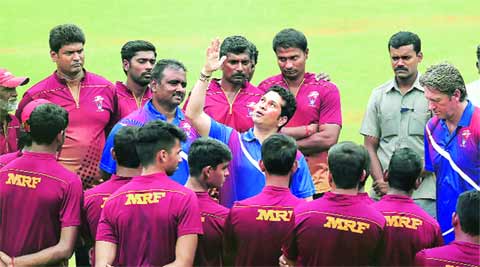 Sachin Tendulkar-Glenn McGrath treat for MRF trainees
Sachin Tendulkar-Glenn McGrath treat for MRF trainees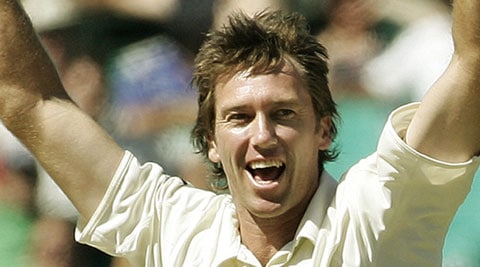 Young Indian pacers need to step up a little more: Glenn McGrath
Young Indian pacers need to step up a little more: Glenn McGrath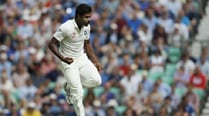 Varun Aaron, Ishwar Pandey to train under Glenn McGrath at MRF Pace Foundation
Varun Aaron, Ishwar Pandey to train under Glenn McGrath at MRF Pace Foundation- NCA to join hands with MRF academy
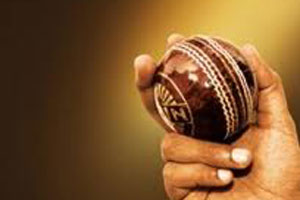 Lillee mulls online coaching for fast bowling
Lillee mulls online coaching for fast bowling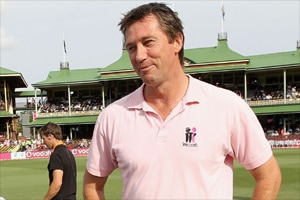 Glenn McGrath replaces Dennis Lillee as Director of MRF Pace Foundation
Glenn McGrath replaces Dennis Lillee as Director of MRF Pace Foundation
A voice rose from the foreground, near the TV, quizzing the players about the potential problems in action and run-up in Aaron’s old video. Most of them gave an apt reply. The analyst was then requested by the same questioner to play a video in which Glenn McGrath was bowling to Sachin Tendulkar. “Can anybody tell me what I am trying to do against Tendulkar?” said the same person. “I am trying to set Tendulkar up and get his wicket,” said McGrath, who took over from Lillee as the pace foundation’s director of coaching in 2013.
Things are in a state of flux these days at the MRF pace academy in Chennai. When Lillee was in-charge, the pace foundation laid emphasis on the right technique that a fast bowler must have in order to become a better pacer, but McGrath tends to focus a little bit more on the art of taking wickets. It’s not as if McGrath doesn’t focus on fine-tuning actions and run-ups but his primary focus is to train the young minds how to out-think a batsman in match situations.
 A week ago, McGrath invited Sachin Tendulkar at MRF . There were two reasons for this decision. The bowlers could learn a different perspective to bowling coming from a batsman and secondly, understand how a batsman thinks when facing a fast bowler.
A week ago, McGrath invited Sachin Tendulkar at MRF . There were two reasons for this decision. The bowlers could learn a different perspective to bowling coming from a batsman and secondly, understand how a batsman thinks when facing a fast bowler.
“We try to improve their actions, so that they become more efficient, bowl quicker for longer and don’t get injured,” McGrath says. “But you also got to focus on the thought processes, the areas you want to bowl and the pressure you want to build and the bowling plans. So if you have a combination of both then they are going to be successful.”
Sometimes, the attitudinal changes in the modern-day bowlers is less talked about. Just as the batsmen have changed in character these days in terms of patience, temperament, technique and skill sets, the upcoming bowlers too are a different lot these days. McGrath realises that many need a boost in skill sets, in terms of thought process so that they get confident about having a bowling plan that can help them get a wicket. “I have realized that the skill level of the bowlers hasn’t increased and that is what I want them to perfect as pacers,” is how McGrath puts it.
M Senthilnathan, the chief coach of the foundation, is someone who has worked closely with Lillee for the past 25 years asserts that the presence of McGrath is a great value addition here at MRF. “Glenn has (recently) retired from all the three versions of the game, so he is having a big impact on the young boys. The foundation has got a head who will help pacers to learn the art of taking wickets,” added Senthilnathan.
MRF has been a nursery which has produced quick bowlers from around the world, and thrown up the likes of Javagal Srinath and Venkatesh Prasad for India. Lillee would focus on hard work, to get pacers fit and correct their actions while McGrath tries to address the mental approach required of a pacer. “My strength was the mental side of the game and I feel I can make the biggest impact there. But now I am learning more about the technical side from Senthil. If I can help a player to be a better cricketer, better person than I have done my job. It’s not about me it’s about improving them,” said McGrath.
McGrath’s biggest plus as a medium pacer was to out-think a batsman. As a bowler who operated in mid 130s to 140kmph, he knew that it will be his skill, control and accuracy, and the mindset to adapt to various conditions which will bring success to him.
A new head of coach is bound to bring in own style and McGrath era is upon us at the MRF. In Lillee’s reign, former fast bowlers such as Jeff Thomson, Joel Garner, Richard Hadlee and Javagal Srinath have been frequent visitors to the foundation working on pacers’ techniques and styles of bowling. A week ago, McGrath had Sachin Tendulkar deliver a motivational lecture to the bowlers. There were two reasons for this decision. First, that the bowlers could learn a different perspective to bowling coming from a batsman and secondly, understand how a batsman thinks when facing a fast bowler.
“So once I remember I had bowled six maidens to Tendulkar in a Test match (in Adelaide in 1999). I thought I would get him out by sticking to the same length but he knew I was playing with his brain. He never touched the ball and I had to change my line eventually. So that is what I want these kids to learn when they bowl to really good batsmen,” McGrath explained.
“McGrath is making efforts in making the bowlers learn the trick to get wickets in a match situation,” Senthilnathan adds. “Line and length is something that doesn’t comes naturally to a fast bowler.”
Target bowling is the mantra
Target bowling is a highlight in McGrath’s routine. He expends a lot of energy and time on it. Accuracy has been sometimes misunderstood, according to McGrath. “Accuracy for me is paramount. And accuracy is not just to bowl at one spot. It is to bowl according to different situations and the ball you want to bowl.” In other words, accuracy is to bowl a short of length delivery on the off stump and follow it up with a full-length delivery just outside off. It’s here that target practice helps.
“When we started a lot many people found it hard but because they have their peers watching it is tougher than it is in the match. I tell my pacers not to cut down their pace but to gain control. So a skill testing exercise is included.
“They should hit the right areas, hit the deck hard. That’s an area where batsman is not sure whether to come forward or back. When we do target practice we set up targets to hit. A good length ball is the one that hits the top of off-stump or a good yorker right up at the base or at toes. These are the areas we get them to bowl, ” said McGrath.
Another facet of the McGrath school of thought is the ability to adapt to different conditions. He dips into his experience to make his point. “I enjoyed coming to India to bowl. It’s a challenge for a seamer but I worked out very quickly. I knew the new ball is hard; take early wickets by getting some balls through to the slips. Later when the ball turned soft and there wasn’t any swing, I would bowl really tight and avoid giving easy runs. Then work on the ball as soon as the ball starts reverse swinging. I can attack a bit more. I have a short mid-wicket, a short cover, build pressure on the batsman and attack the stumps more. It was a totally different plan to what I had in Australia and England,” explained McGrath.
A pacer from the current batch, who recently represented India and did not wish to be named, said how McGrath counseled him on specifics. “When I came back (after playing for India) I had a word with McGrath sir. He told me that I failed to adapt to those conditions. He said that the wickets were flat so I should focus on accuracy,” the pacer said.
Another pacer, who has been a part of the MRF foundation for the last four years and has trained under Lillee as well, feels that McGrath’s style certainly lends an advantage. “Lillee sir was technical in outlook. He wanted a pacer to have a proper technique but McGrath, who does follow on Lillee’s principles, has a different look to fast bowling. He is loaded with strategies that come in handy when we go and play a match.”
“Never ever we had thought that getting a batsman out will be that easy. We play in Chennai and the wickets are not the same and rarely support pacers. But the mantra and the guidance he has given, we follow that and find ourselves much better than before,” the pacer quoted.
McGrath makes multiple visits to the foundation – each stint is for two weeks. With the main domestic competition Ranji Trophy set to start next month, McGrath’s main aim is to make the bowlers match ready. “The two weeks programme is really intense, and the training varies according to season and off-season. In season we focus on which areas bowler wants to bowl. What are your bowling plans and how are you looking to take wickets,” said McGrath.
‘We don’t change action’
It’s not all hunky-dory though. McGrath and MRF are facing a strange problem in getting a steady supply of fast bowlers from all parts of India, especially from the powerhouses of fast bowling- Punjab and Haryana. The Indian cricket board sends their elite pacers to MRF but the in flow of raw talent has gone down exponentially.
It’s a problem of perception. There is a misconception, the foundation believes, about the coaches at foundation changing bowling actions. McGrath seeks to clear that allegation. “Yes that is one thing which I feel is not true. We at MRF don’t change anybody’s bowling action. We rather fine tune it. We try to improve the actions, so that they become more efficient, bowl quicker and they don’t get injured,” McGrath said.
Often, the case of Munaf Patel is used to point out that the foundation had tinkered with his action which resulted in a drastic drop in pace. The truth though contradicts that theory. Munaf was definitely quick in his early days but a serious back injury had threatened to end his career. The doctors had told him to forget about bowling again. It was then that Patel, who had visited MRF as a raw talent, decided to change his action in an effort to prolong his career. “Munaf undoubtedly was very quick. He had a slight slingy action and his front foot was across. Now it had two things. One because his arm was a little round-arm, he was more predictable as a bowler. Second, he was always very vulnerable for a major back problem. His entire posture was wrong. So Lillee decided to fine tune his action. We straightened his front foot and immediately his arm also straightened. He became front on which meant no problem to his back whatsoever. His predictability came to an end and he started bringing the ball into the batsman as well. So doing this we gave him good 8-9 years of international cricket,” explained Senthilnathan.
McGrath does admit that the tough conditions and slow nature of wickets in India takes a toll on bowlers. “The express bowlers are a rare commodity here. Pace is one thing hard to teach to someone who can’t bowl express pace. And when you look at guys like Brett lee, Mitch Johnson, guys who are express, the older they got, the more experience they got. Further, the wickets at state level are slow, no pace, no bounce, and it’s really hard to work on such pitches. But it doesn’t mean they can’t be effective, you just need a different approach,” McGrath said.
Gone are the days when pacers visited MRF just to alter the bowling actions and fuss obsessively about load-ups and release positions. There is a lot of hope among the members of the foundation that McGrath can chalk out a plan to produce better bowlers. A silent revolution is underway in Chennai headed by the best fast bowler of the modern era, and Indian bowlers can only stand to benefit.
Change of pace: Different bowlers, distinct coaching methods
 Dennis Lille
Dennis Lille
Dennis Lille, who headed MRF pace academy for 25 years, was regarded as a “complete bowler” of his era. Armed with a copybook action, and a bristling, intimidating run-up boosted by a stint with a running coach, he harassed the best of the batsmen of his time. When a back injury threatened to end his career, he reinvented himself, and though he bowled with a reduced pace, he troubled batsmen with his famous leg cutters and other variations to pick up 355 wickets at 23.92.
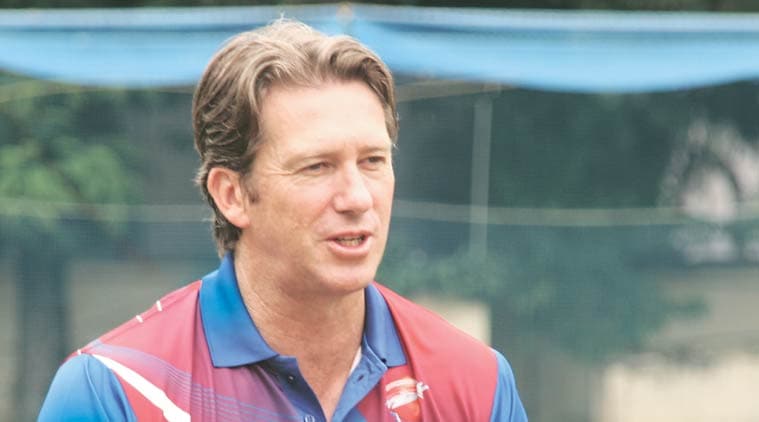 Glenn McGrath
Glenn McGrath
Glenn McGrath, the man who has replaced Lillee at MRF, was a bowler blessed with a perfect action that ensured an injury-free career. A metronomic bowler, whose complete control over his art equipped him with the ability to land the ball where he desired, and he ended up as Australia’s highest wicket-taking pacer, bagging 563 wickets at 21.64. These days he is trying to help the bowlers learn the art of picking up wickets. He will be working with top Indian pacers.
* How does McGrath challenge the notion that MRF changes bowling actions?
The new head coach of the MRF academy says the perception is incorrect. “We fine-tune where its necessary. I want the bowlers to learn how to out think a batsman. There are bowlers who have terrible actions but if they can bowl top pace all day second and third spell and they can never get injured I have no issue with that. I don’t want to kill a natural talent and unique ability,” he says.
* How does McGrath define accuracy?
McGrath says accuracy isn’t just the abiltity to bowl at one spot. “It is to bowl the the ball you want to bowl according to different situations.” So, it’s about the ability to land the ball at areas according to the bowling plan to get a batsman out.
* How does McGrath conduct target practice?
The areas are marked out on pitch where McGrath wants his bowlers to land. To make it competitive, marks are cut if the bowlers don’t bowl to a plan. The Australian wants the trainees to develop the skill to pitch the ball where they want it to land. McGrath says fast bowlers loath doing target practice even at international level. However he insists that it’s the best way to gain accuracy, control, and helps bowlers set-up a batsman.
* What’s a “right area” to bowl?
According to McGrath, it should be about hitting the deck hard at the top of the off stump. “That’s an area where batsman is not sure whether to come forward or back and wouldn’t get easy runs. When we do target practice we set up targets to hit. We call a good length to hit on the wicket, which is hitting top of off stump or a good yorker right up at the base or at toes. These are three areas we get them to bowl.”





